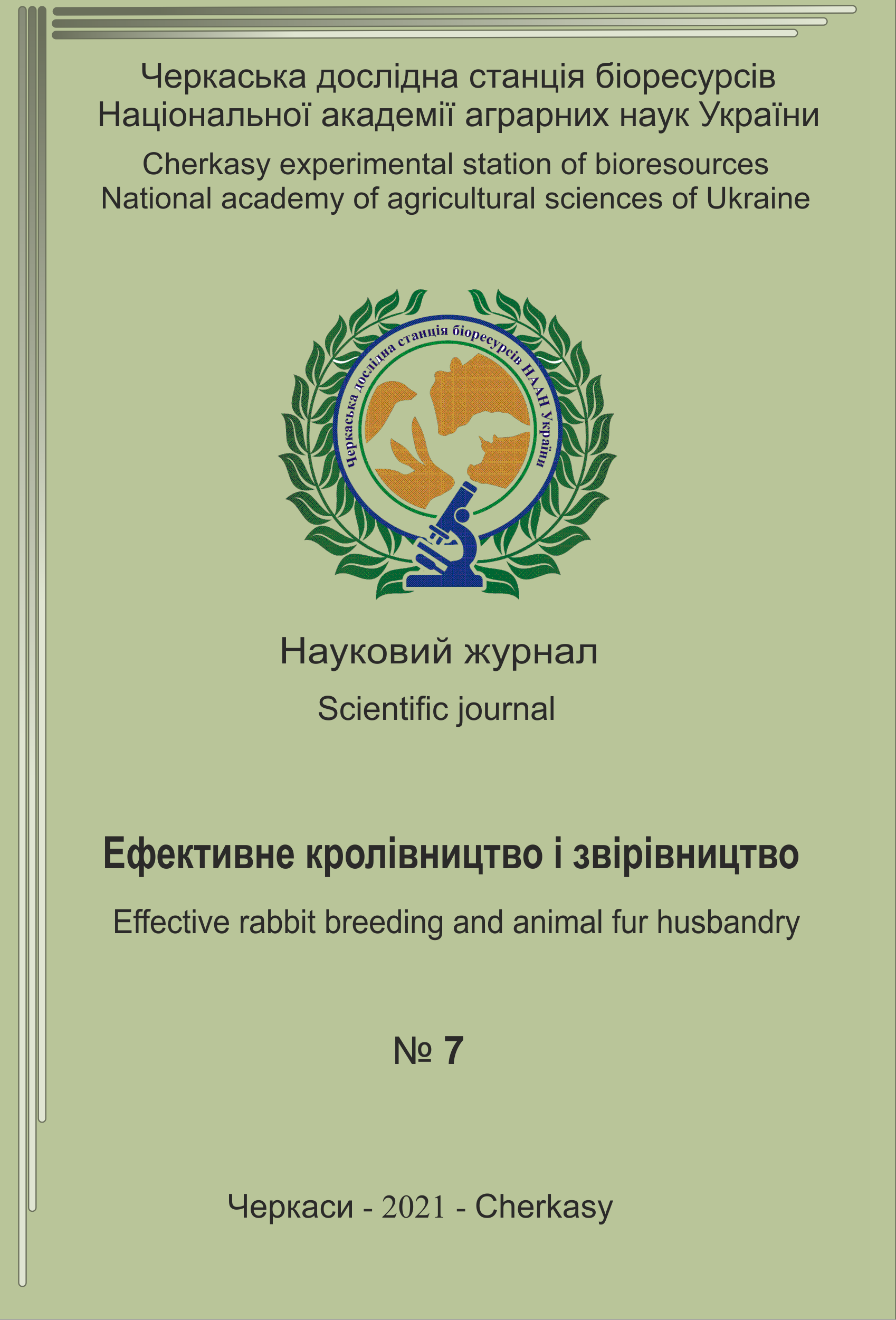PRODUCTIVITY OF FEMALE RABBITS OF DIFFERENT WEIGHT DISTRIBUTION CLASSES AND GROWTH OF YOUNG RABBITS DERIVED FROM THEM
DOI:
https://doi.org/10.37617/2708-0617.2021.7.81-89Keywords:
крос «Hyla», кролематки, жива маса, багатоплідність, кроленята, приростиAbstract
The industrial production of rabbit is realized through the use of rabbits obtained as a result of breed-linear hybridization. They are obtained by crossing specialized groups of animals - females of the maternal form and males of the parent form of the cross. In order to ensure high profitability of rabbit breeding,
maternal-shaped rabbits should have high fertility and milk yield, as well as excellent maternal qualities. For this reason, considerable attention should be paid to breeding females of the maternal form by these features, as well as taking into account the indicators associated with them. In particular, the live weight of
rabbits is an indicator of the development of an animal, which allows predicting the performance of females.
The results of the study of the multiplicity of females of rabbits with different live weight show that for the 1st wing the highest multiplicity had females with live weight at the level of 4,90-5,45 kg - 9,15 heads, while for the 2nd wing - the slaughterers with the higher live weight (5.49-5.83 kg) - 11.60 heads. Analysis
of the live weight of rabbits obtained from rabbits with different live weight indicates that at the age of 70 days the highest live weight was in rabbits obtained from uterus with average live weight - 2562,91 g. The highest intensity of growth was characteristic of the rabbits obtained from rabbits with higher live weight -
their average daily increase during the indicated period was 44.65 g.
For the most efficient production of rabbits when working with Hyla cross, it is advisable to use maternal-shaped rabbits having a live weight of 4.90-5.83 kg, since they have the highest multiplicity for I and II calves, and also from them it is possible to get young , which is characterized by the highest growth rate from
weaning to slaughter and the highest living mass at the age of 70 days.


